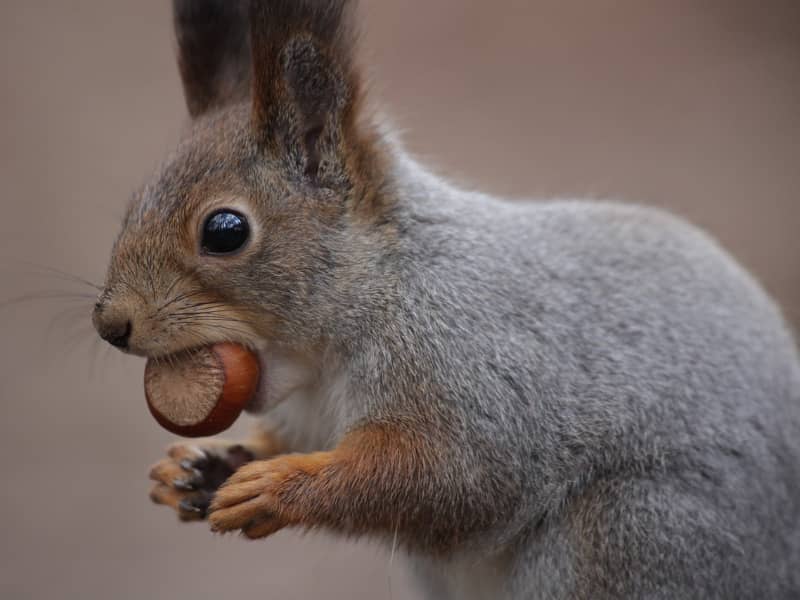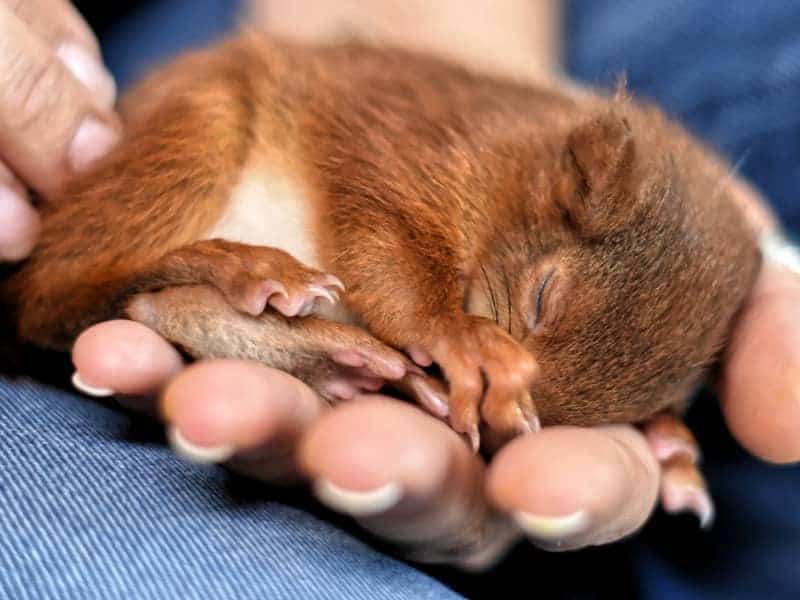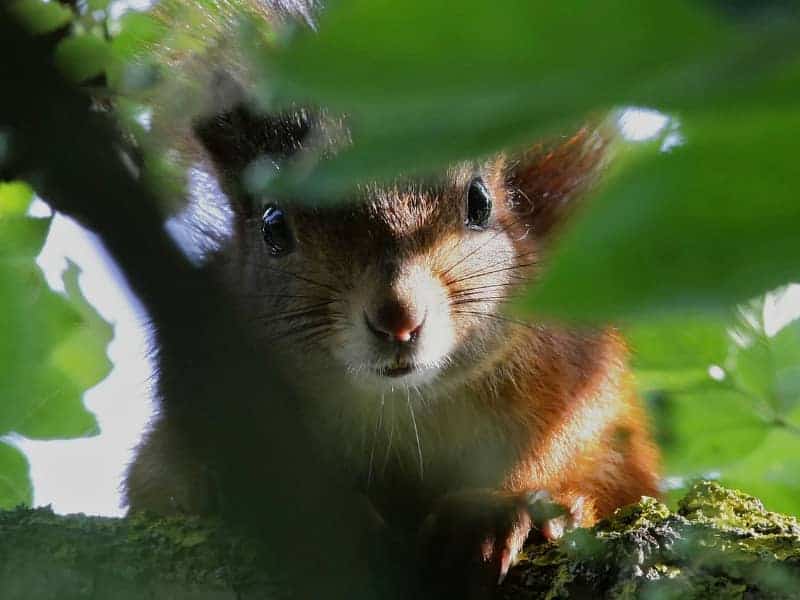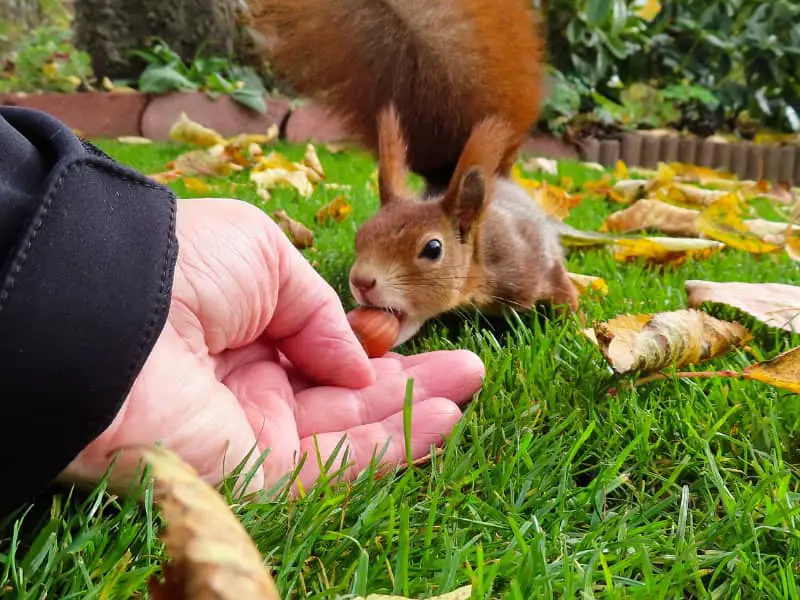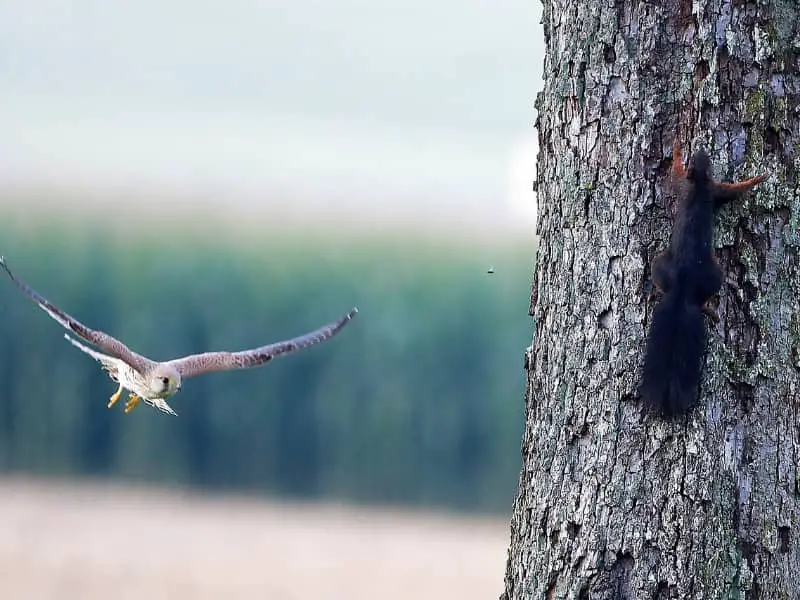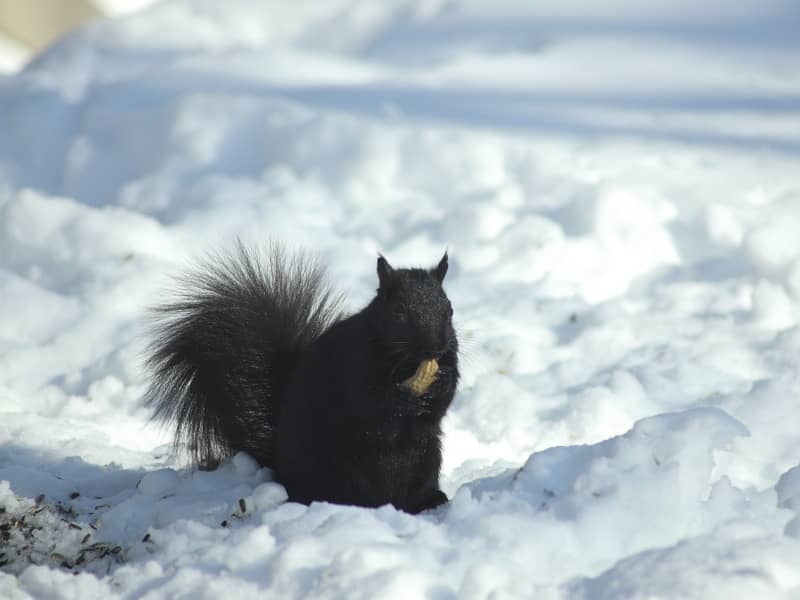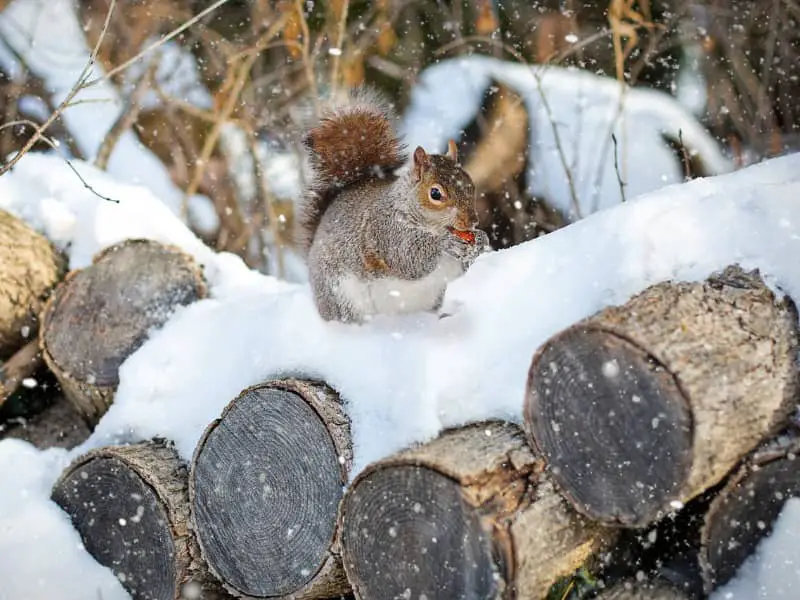
Squirrel tracks
When you think of squirrel tracks, you probably first think of the paw prints. The prints of the hind foot are clearly different from those of the front foot. As an attentive observer, you will also find many other tracks in nature that lead back to a squirrel.
On the trail of the squirrel
Especially in fresh snow you can see the squirrel tracks very well. Experts speak here of hip jumps of the animal. In the so-called squirrel jump, the hind feet are placed laterally in front of the front feet. The hind feet leave 5 toe prints (5 cm long and 3 - 4 cm wide) and are a little larger than the prints of the front feet with 4 toe prints (4 cm long). Such tracks usually begin and end on trees.
Tracks from squirrel not only in the snow
But you don't have to wait until snow falls to spot squirrel tracks. Very conspicuous and usually even more obvious than tracks in fresh snow are accumulations of food remains under fir trees or other trees. The small rodents were at work here. On the one hand they gnawed off branch tips and on the other hand they tore open fir cones. They do the latter to get at the seeds in the cones. The squirrel simply tears off the scales of the pine cones. You can then find them under the trees.
In spring there are also other tracks to be discovered. The squirrels are on the lookout for buds, another important food source. To get to these buds, the squirrels break off the outer branch tips. This allows them to easily reach the tender and very nutritious buds. Unfortunately, however, no new cones or even new shoots develop later in these places.
In summer, squirrels usually climb to the top of trees. There they gnaw the bark of the young trunk. The trunk is particularly tender this far up. In the process, the animals lick up the oozing sap and gnaw on the fresh wood. Foresters usually don't find this behavior funny, because the wounds on the trees can cause them to die.
How does the squirrel open pine cones?
It is very difficult for the small rodent to reach the inside of the pine cone. With its front paws, the squirrel pulls the cone towards itself. In the process, the cone is often separated from the twigs with its nail teeth. The animal carries the pine cone with its mouth to a safe branch or to an appropriate hiding place. There it then holds the cone with both hands and begins to tear off the scales one by one from behind. You will then find these as a safe trail under the trees.
The track radius of squirrels
Many times you will find squirrel tracks near your garden. This is due to the fact that the squirrel is very well adapted to the conditions in the city or in residential areas. Experts also call these animals cultural followers.
In most cases, squirrels move in a habitat that is about 1 hectare. Therefore, you will always discover tracks.
Does the squirrel have a territory?
Most squirrels live alone and do not have a fixed territory. They usually stay where they find enough food. Especially in cities and residential areas, these are usually the gardens of the residents.
During the mating season, squirrels tend to have territories. The mothers then also behave aggressively towards other females. It can then also come to biting attacks.
Author

-
Garden animal - A life with nature
Welcome to my animal blog! My name is Dirk and I am happy to take you on my journey through the fascinating world of animals and gardening.
Born 54 years ago, I have had an insatiable curiosity for the animal world around me since childhood. Although I have moved professionally in other industries, my true passion has always been animals and nature. It is remarkable how a small garden has become such an important part of my life.
Many of my fondest memories are associated with the animals that share our home. Whether it's the curious squirrels that scurry across the trees in the morning, the colorful variety of birds that visit our feeders, or the busy bees and butterflies that pollinate our flowers, every moment with them is invaluable to me.
This blog is my contribution to share my experiences, discoveries and insights with like-minded people. Here I will share stories of unforgettable encounters with animals, give tips on gardening and creating wildlife-friendly habitats, and take you on my journeys through nature.
Thank you so much for being here!
Cordial,
Dirk aka garden animal
Last posts
- 27. February 2024PetsVeganes Hundefutter – Grün und Gesund?
- 18. January 2024ChickensOregano für Hühner
- November 27, 2023HamsterDiurnal hamsters
- November 24, 2023HamsterHamster hammock

